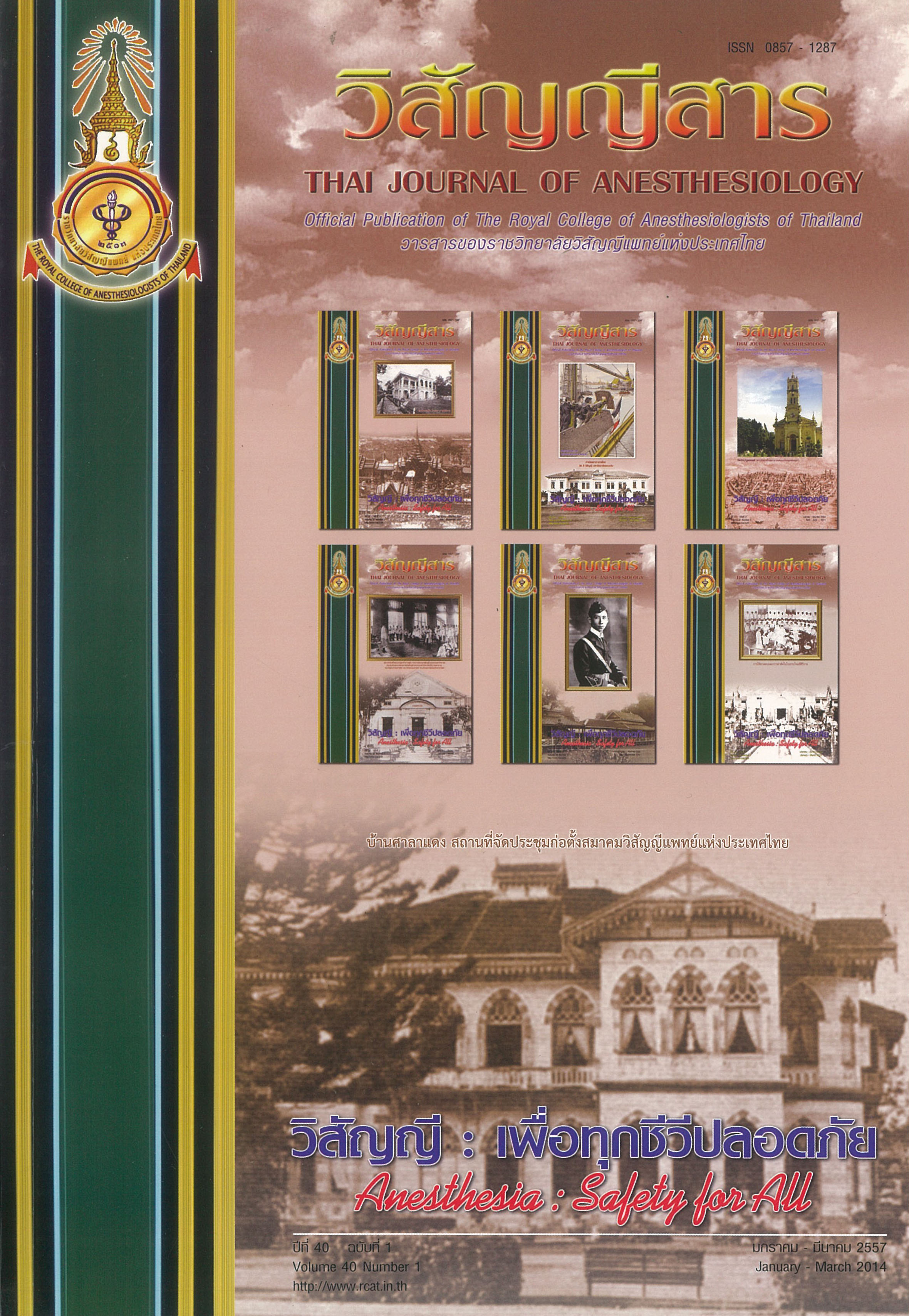Ultrasound - guided cannula cricothyroidotomy versus the conventional technique in soft cadaveric models: a randomized controlled trial
Main Article Content
บทคัดย่อ
Background: Emergency cricothyroidotomy is indicated as a rescue measure for “can’t intubate, can’t ventilate” (CICV) situations. The cricothyroid membrane, an important landmark for the procedure, may not easily be identified by palpation (1) and the failure rate of cannula cricothyroidotomy was high according to existing literature (2). Airway ultrasonography was introduced to increase the success rate and reduce complications of airway management procedures, including cricothyroidotomy (3). Currently there is no study comparing the ultrasound to the conventional technique for cricothyroid cannulation. The purpose of this study was to compare the success rate as well as the procedural time and associated complications of ultrasound - guided versus conventional cannula cricothyroidotomy in soft cadavers which have lifelike anatomy and consistency.
Method: 23 staff anesthesiologists who used ultrasound in their daily anesthetic practice and had never performed cricothyroidotomy on live patients participated. To minimize interference from learning experience, each performed the procedure twice. All anesthesiologists were trained for both the conventional cannula cricothyroidotomy on a mannequin and the ultrasonography to identify the cricothyroid membrane. Soft cadavers were prepared; excluded those who were under 18 years old and had anterior neck abnormalities. Total 46 cadavers were randomized to either ultrasound - guided or conventional cannula cricothyroidotomy group. The primary endpoint was the success of the procedure, defined as the correct positioning of the cannula tip between vocal cord and upper trachea as confirmed by bronchoscopy. Secondary endpoints were the time to cannulation, recorded as consensus of two investigators present, and complications as seen by bronchoscope. Demographic data such as sex, body mass index and skin to cricothyroid membrane depth, as measured by ultrasound, were recorded for comparison. The difference between the success and complication rates was analyzed with a Chi - square test. Survival curves were plotted for the time used and compared using a log rank test.
Result: A total of 46 procedures were included, 23 for each technique. The two groups had similar demographics and membrane depth. There was no intergroup difference in success rate [group C 15/23 (65.22%) group U 10/23 (43.48%) P = 0.139], nor complication rate [group C 5/23 (21.74%) group U 10/23 (43.48%) P = 0.116]. The procedure time was longer in ultrasound group than in conventional group [229 vs 28.1 p = 0.004].
Conclusion: Among general anesthesiologists, ultrasoundguided cannula cricothyroidotomy is not superior to the conventional technique and requires more time. Application of ultrasound to guide cannula cricothyroidotomy in CICV situation must be used cautiously.


